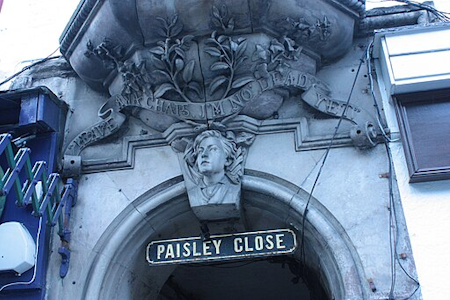 In Edinburgh in 1861 a great disaster occurred which had enormous repercussions and yet it’s also largely forgotten – the thread about the ‘Fall of Heave Awa Land’
In Edinburgh in 1861 a great disaster occurred which had enormous repercussions and yet it’s also largely forgotten – the thread about the ‘Fall of Heave Awa Land’
image for illustration: Sculpted head of a 14 year old boy buried on the site in a tenement collapse by John Rhind by Stephencdickson, CC BY-SA 3.0, via Wikimedia Commons
…‘Heave awa’ lads, I’m no deid yet!’…
Threadinburgh writes:
It was a frosty Sunday morning, between 1-130AM…
[The] city’s emergency services were thus soon on the scene and were met by a scene of complete devastation. Of the 7-storey tenement which had moments before stood at 99-103 High Street (formally addressed as 4 Paisley Close), nothing now remained standing except its rear gable. The rest of it now filled the entire width of the street…
The first bodies pulled from the wreckage were all survivors…
The rescuers dug on….
….The neighbouring tenements were evacuated and serious consideration was given to deliberately collapsing the still standing 8-storey rear gable of 4 Paisley Close as it was feared it might give way on the rescuers….
…. From within the wreckage, a child could be heard crying. They dug towards him for two hours before finding him trapped beneath a beam. The boy summoned his strength and his courage to urge his rescuers with the words – “Heave awa’ lads, I’m no deid yet!”. He was 12 year old Joseph Mcivor….
The rapid collapse of the building was precipitated by the undermined, decayed, supporting wall giving way – “it not merely fell but was shattered to pieces”. It turned out this wall was not tied into the gables but stood freely, supported only by itself, so when it went so did the entire structure above it. All the way to the top, the entire central wall came down….
The long term response was to do something many had long called for – appoint a Council Medical Officer of Health. Although carried by only 1 vote, in 1862 Dr. Henry Littlejohn, the police surgeon on the spot that night in November 1861, took up the role; the first in Scotland…
